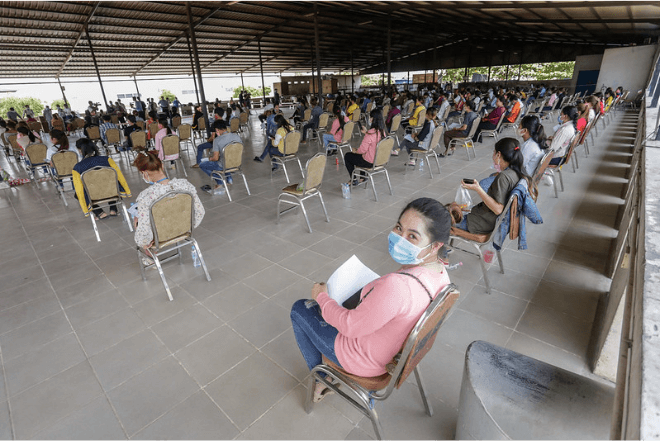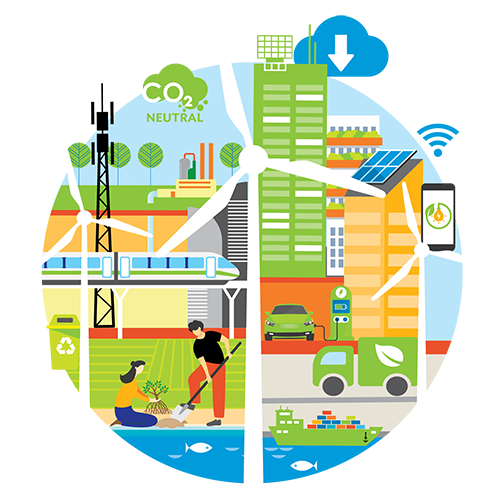The coronavirus disease (COVID-19) pandemic was hard on everyone, but devastating for many.
In the Asia and the Pacific, the pandemic is estimated to push an additional 80 million to 160 million people back into poverty, reversing much of the gains made in recent years, said Robert Guild, chief sector officer at the Sustainable Development and Climate Change Department of the Asian Development Bank (ADB), during the recently concluded Southeast Asia Development Symposium (SEADS).
Some sectors remain vulnerable as countries struggle to contain the pandemic with vaccination programs in developing countries in Asia hamstrung due to low global supply.
“We should not be thinking about returning to normal but rather to a new normal. Developing Asia and the Pacific is unlikely to be fully vaccinated within 2021 and in fact COVID-19 could become endemic like the seasonal flu, so caution and preparedness for disruption will be with us for a while,” warned Guild, who took part in the panel discussion, “Recovery for All: A Human-Centered COVID-19 Response,” during SEADS 2021 held 17–18 March.

Guild and his fellow panelists noted the pandemic’s impact on vulnerable groups and identified measures to foster an inclusive recovery.
1. Shift to a green economy
Ketsuda Supradit, international economic advisor at the Fiscal Policy Office of Thailand’s Ministry of Finance, said Thailand is looking at shifting to a green economy to ensure a long-term inclusive recovery. She said Thailand is adopting the bio-circular green economy model, which will focus on four sectors: food and agriculture, medical and wellness, energy and biochemicals, and tourism and creative economy.
Guild said ADB is keen to help member countries in fostering a green and inclusive recovery. “We believe that the pandemic presents an opportunity to build back with more resilient sustainable infrastructure.” This entails building sustainable urban development and transport models with greater investment in safe affordable and low-carbon transportation.
He said a sustainable and inclusive recovery also entails establishing circular economy models that focus on converting by-products and wastes into valuable end-products, accelerating the move to clean and renewable energy to mitigate climate change and provide next-generation jobs, transforming agriculture to improve yields, and recovering healthy and sustainable oceans.
2. Improve digital access
Improving digital access is also key to an inclusive recovery. Janti Soeripto, president and chief executive officer of Save the Children US, said there is a need to invest in faster internet as a way to improve children’s access to online learning.
She noted that COVID-19 has had a devastating impact on the education of children from poorer backgrounds as online learning was not available to all. This will further widen the gap between rich and poor and boys and girls, she said, citing a global survey Save the Children conducted last year. “We're going to see the poor families get poorer. We're going to see girls married off at a young age because the family can't afford to keep her in school. We're going to see kids put to work, again because of economic pressure on the family.”
She said other epidemics, like the Ebola crisis in Africa in 2018, had also shown that children who stopped schooling due to the crisis were more at risk of never going back to school. “We will see most of the Sustainable Development Goals progress over the last decades that we've seen being rolled back and that particularly concerns us for kids,” she said.
Magnus Ekbom, chief strategy officer of Lazada Group, said having a fast internet is now imperative as the pandemic accelerated the shift toward the internet economy. Fast internet, for instance, is needed for online education, he cited.
He said upgrading Southeast Asia’s mobile internet infrastructure to fifth-generation, or 5G, could cost up to $15 billion.
3. Leverage on technology
Ekbom also stressed the need to take advantage of technology. “Technology can be a positive catalyst to drive new ways of living, of working, of educating, and even of shopping.”
He said online platforms like Lazada give consumers access to products while giving small- and medium-sized enterprises (SMEs) a way to reach consumers. This is one way of future-proofing SMEs and Southeast Asian economies.
Soeripto also urged authorities to ensure equitable access to technology and devices among girls in poor households or communities.
To further improve access, she said governments need to be better at targeting. Governments and stakeholders need to look at the population, identify those without access, and determine the reason. “When you do that kind of analysis, if you get it right for those people you get it better for everybody.”
She further urged countries to include digital literacy in the education curriculum to address online risks among children.
Ketsuda said Thailand is also looking at digital transformation for longer-term economic growth. She noted that during the lockdown, technology has helped the government distribute cash aid to low-income households. She noted the need to enhance digital literacy among SMEs, especially those seeking to shift to e-commerce. Thailand is also looking at technology to improve tax administration and government revenues.
4. Address gender inequalities
Noting the pandemic has worsened gender inequalities, Guild said some of the ways to address this include promoting proactive policies to redistribute women's care responsibilities; increasing women's labor force participation; creating new models of public and private high-quality affordable care for children, the elderly, and disabled; and improving the employment conditions of female-dominated occupations, such as in informal services. Supporting women’s entrepreneurship through skills training and improving their access to financial services can also address these inequalities, he added.
Ekbom said women’s access to technology should be improved. “Female entrepreneurs using technology is a bright spot of last year because the playing field is fairly level in terms of female entrepreneurs being able to start a business in their home. They don't need to be even out of their domestic premises to start or to build a business.”
At the same time, there is a need to look at the system as a whole to empower female entrepreneurs to have the time and have a right to work, he said, noting how women had to carry the burden of caring for their children’s home schooling in the wake of the pandemic.
5. Foster public–private collaboration
Collaboration between the public and private sectors is also needed for an inclusive recovery, said Ekbom, citing Lazada’s own experience in dealing with governments across Southeast Asia in the wake of the pandemic.
“The first phone calls that were placed as the pandemic unraveled a year ago were to our government counterparts to ensure that we have open channels. I would really want to commend leaders across all the markets that we are in here in Southeast Asia for their responsiveness and reactiveness,” he said.
The collaboration in the wake of the pandemic has blurred the lines between the private sector and the public sector in a positive way, he said. “We realize that we have to work together to find ways out of the crisis. There needs to be… a constructive dialogue on many of the complicated topics that we are faced with because this is not a matter of easy answers.”
6. Expand employment opportunities
With countries and businesses now on the recovery path to build back better, Guild said there is a need to improve employment and re-employment opportunities. One way is through skills development via partnerships with technical and vocational training institutions, he said, noting that apprenticeship programs and on-the-job training in combination with classroom learning is a great way to introduce higher order skills that are vital to sustainable development.
Governments also need to help people prepare for the future of work as economies evolve, he said, citing the findings of a new ADB study on skills development in high-growth industries, also called Industry 4.0.
Ketsuda said Thailand is also keen to take advantage of Industry 4.0 as part of its longer-term recovery.
The ADB study explored the implications of Industry 4.0 on the future of jobs, skills, and training in Southeast Asia, particularly for high-growth industries in Cambodia, Indonesia, the Philippines, and Viet Nam.
“We estimated job displacements and gains in these new industries and sectors as they outgrow old ones and we found that job losses in the traditional economy could well be offset by new jobs of the future. However, 21st century skills development and digital fitness are really crucial to realize those benefits,” said Guild.
“We're in the midst of a massive unplanned exercise of retooling education and using technology to reach everybody and we're learning as we go. We need to continue to focus technology where it can be most effective and equitable and also support lifelong learning as industries and careers evolve.”

